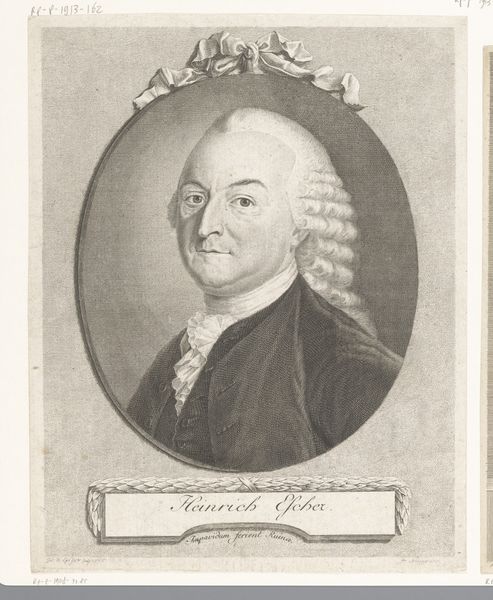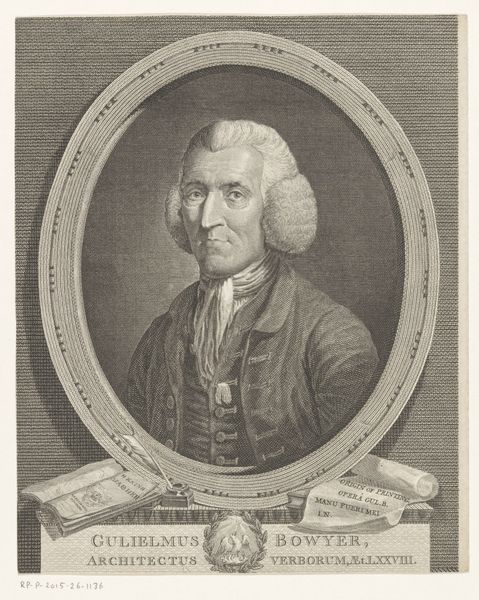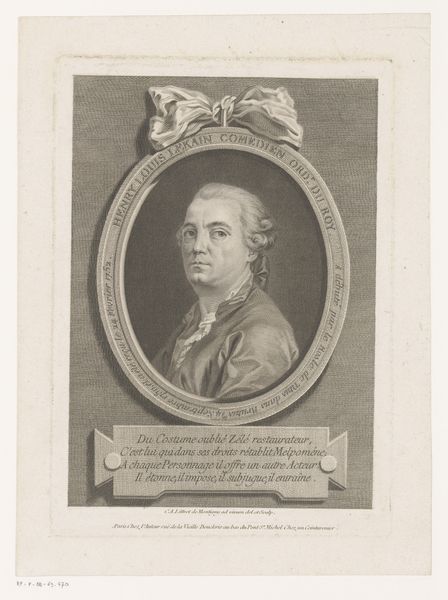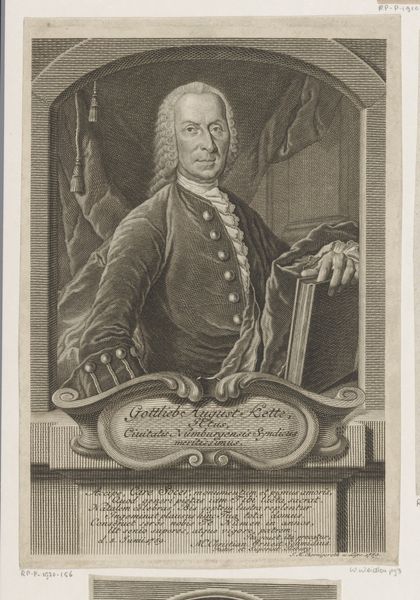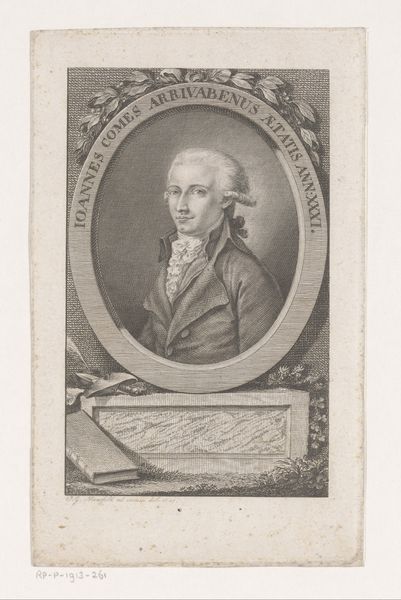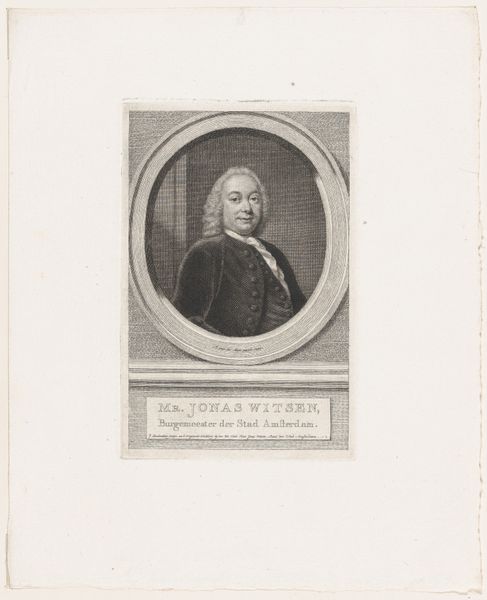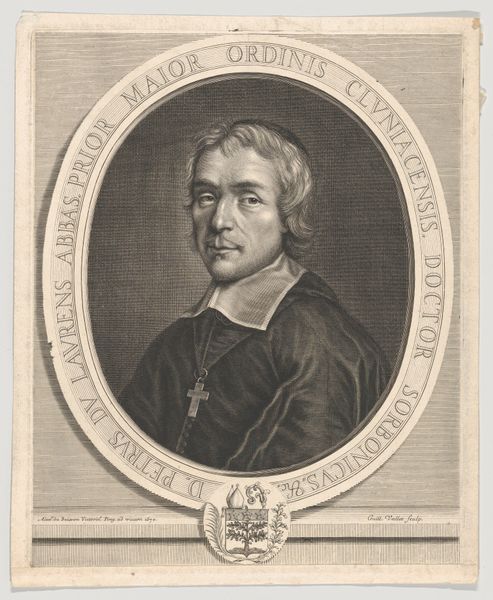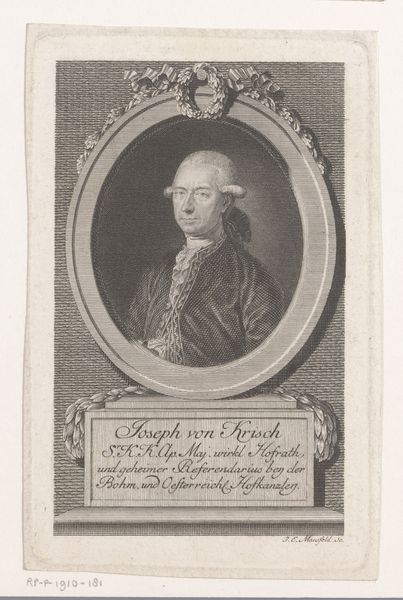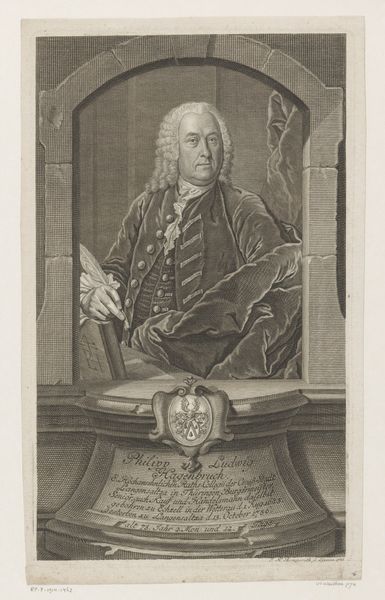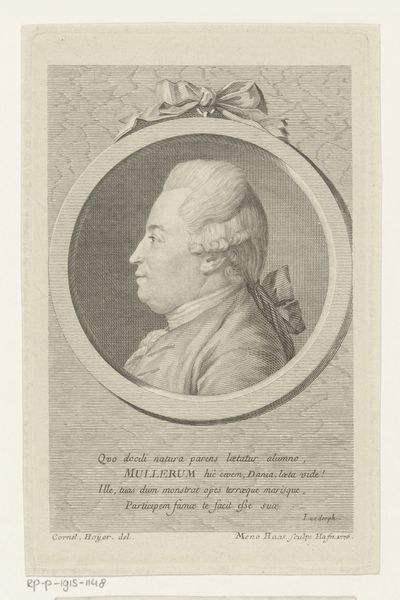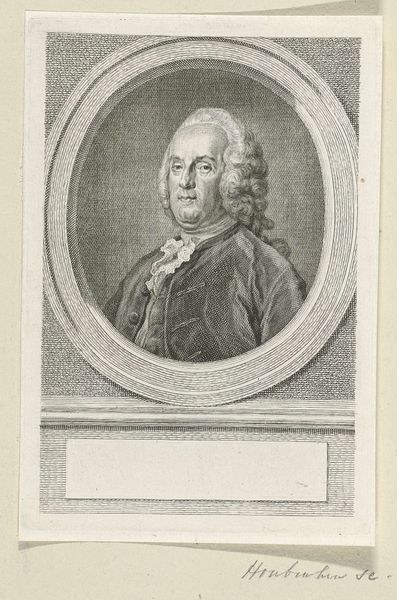
Portret van Gottlieb Heinrich Kannegiesser 1730 - 1792
0:00
0:00
johannchristiangottfriedfritzsch
Rijksmuseum
Dimensions: height 214 mm, width 134 mm
Copyright: Rijks Museum: Open Domain
Editor: This is a piece called "Portret van Gottlieb Heinrich Kannegiesser" made between 1730 and 1792 by Johann Christian Gottfried Fritzsch. It's an engraving on paper, and it feels very formal and structured, like a historical record. What strikes you most when you look at it? Curator: Oh, it sings to me of quiet dignity! That oval frame, like a whispered secret, holds Kannegiesser, doesn't it? But it’s more than just a record, more than stiff formality. See how the light catches his face? He's not posing, he's present. He is almost like a character out of Fielding, isn’t he, slightly world-weary but with a glimmer of mischief still lurking? And those carefully etched lines, they remind me of a Baroque symphony—complex, interwoven, and resolving into a singular harmony. Do you see any evidence of the Baroque period influencing this work? Editor: I do now that you mention it! The ornate details around the portrait feel very Baroque. I was so focused on the person I missed it! Curator: Exactly! Fritzsch, he was clever, blending that old-world flamboyance with the emerging Enlightenment's focus on the individual. Look at that inscription below—it practically shouts, "Here stands a man of substance!". And the frame is a window. We see him through it. How does this portrait compare to modern portraits we are all bombarded with? Editor: Well, there’s an objectivity in his gaze. Today, many people like to convey emotion or catch an evocative moment to present a particular image. Here the artist seems intent on documenting, without overtly romanticizing. Curator: Indeed! And perhaps it serves as a meditation on what truly lasts: an inner quality which shines through, regardless of changing trends. So tell me, has Herr Kannegiesser begun to feel less like a name in a history book and more like… well, an acquaintance? Editor: Definitely. It's like a portal to another time, and to knowing another human being. I will try and think more deeply about artistic historical works going forward.
Comments
No comments
Be the first to comment and join the conversation on the ultimate creative platform.
